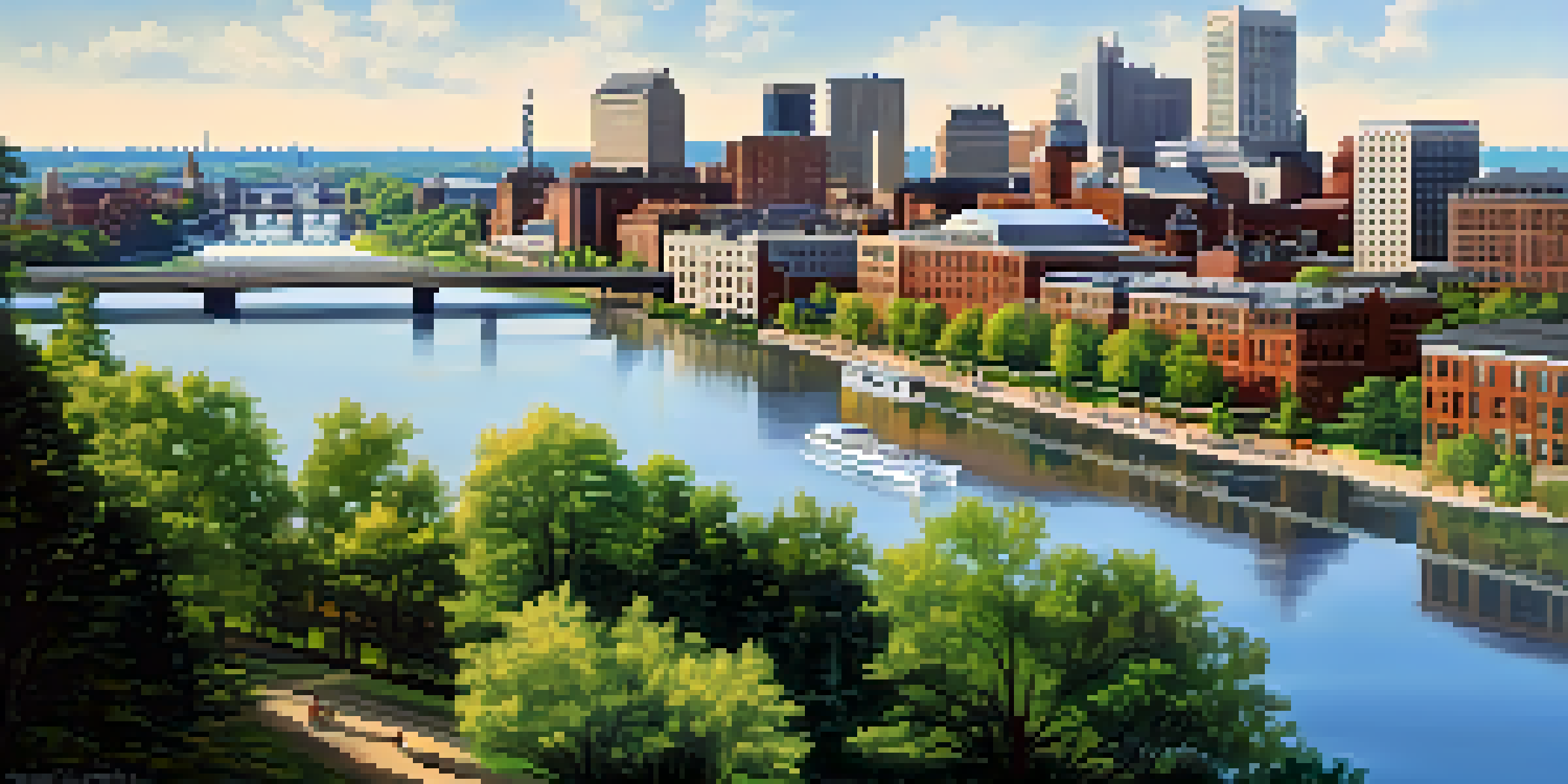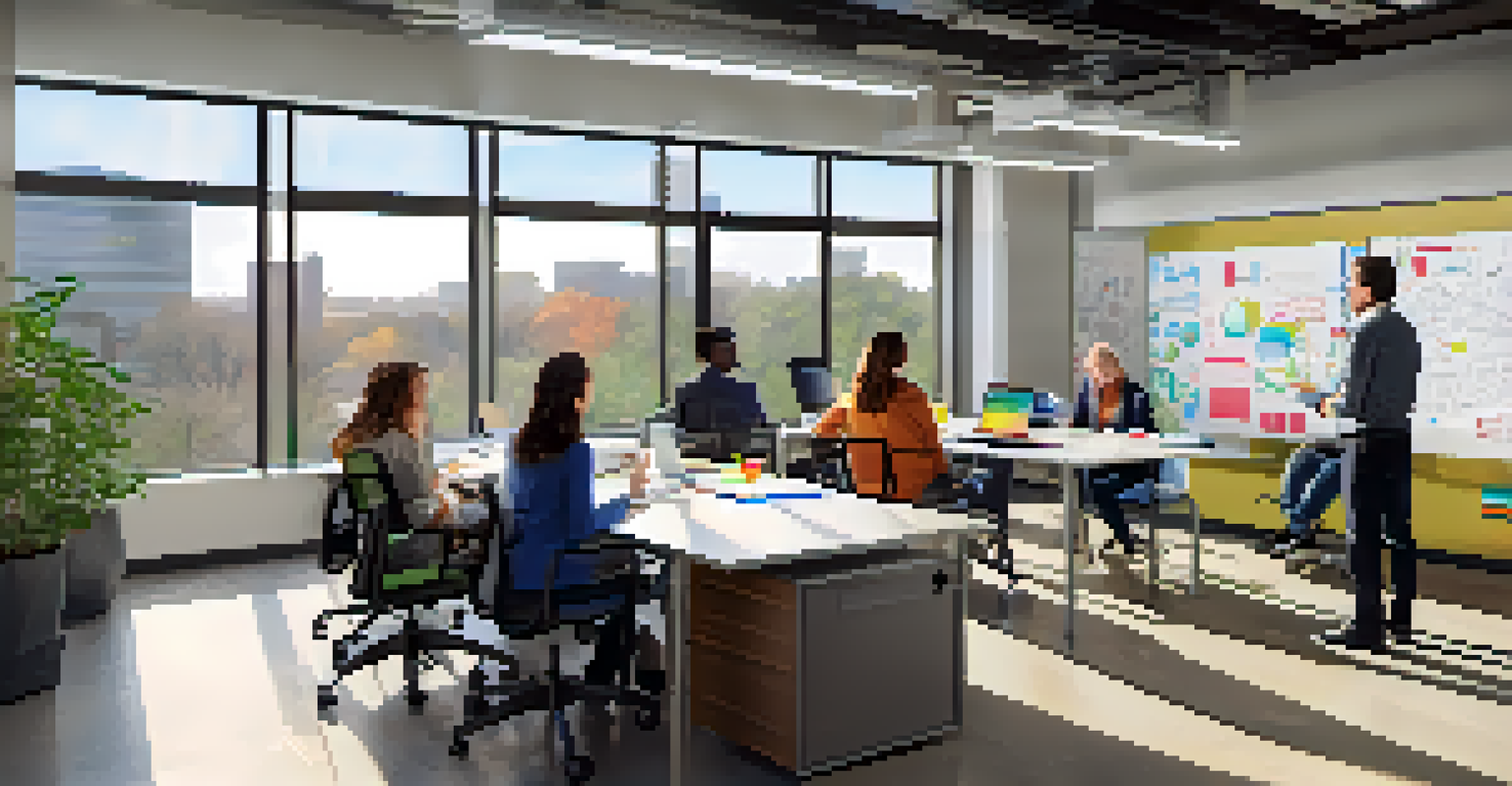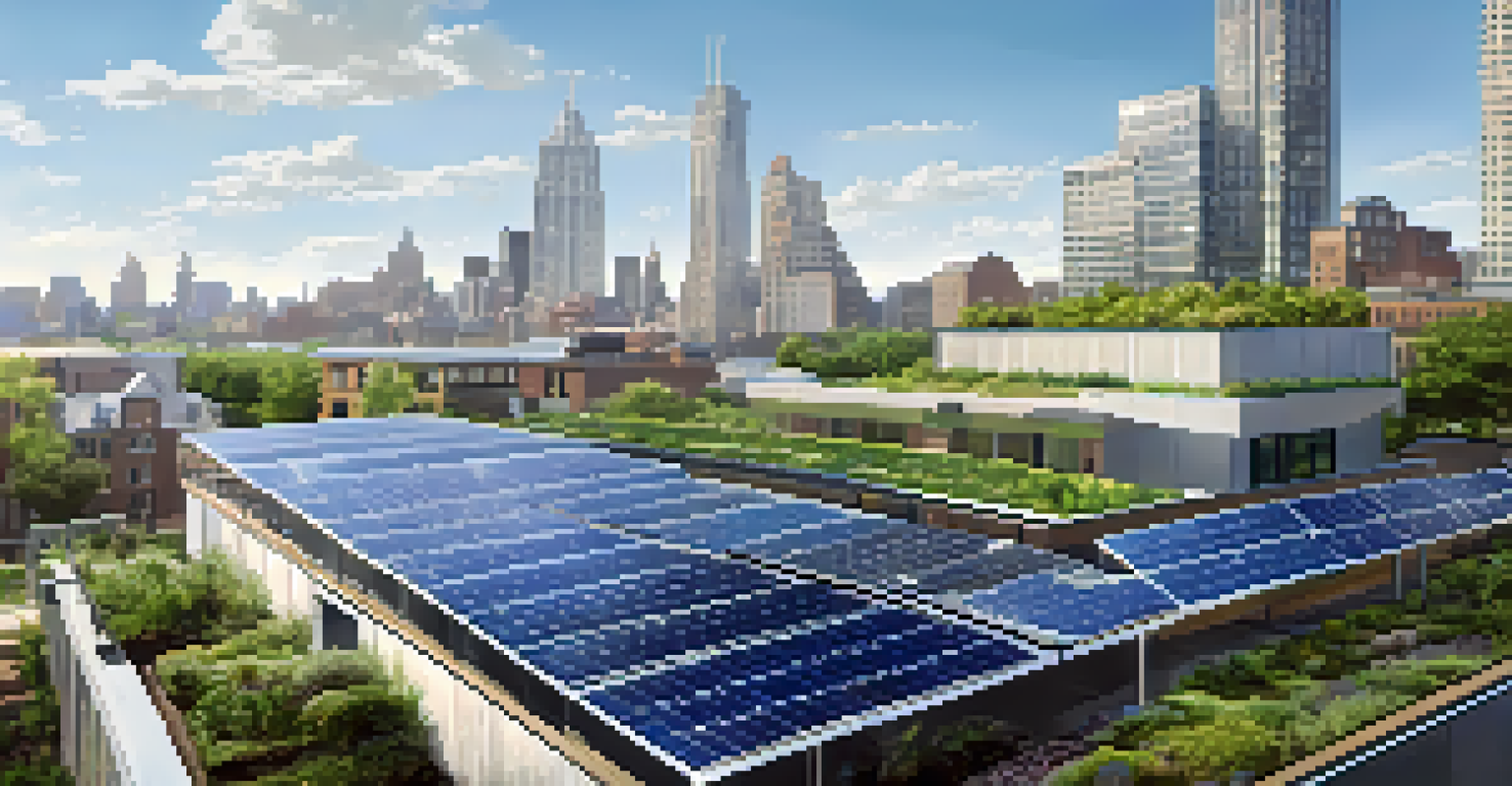Manufacturing to Innovation: Rochester's Economic Journey

The Roots of Rochester's Manufacturing Legacy
Rochester, New York, has a rich history steeped in manufacturing, dating back to the mid-19th century. Known for its robust industrial base, the city became home to several iconic companies, including Eastman Kodak and Bausch & Lomb. These giants not only shaped the local economy but also influenced global markets with their innovative products and practices.
Innovation distinguishes between a leader and a follower.
As manufacturing thrived, Rochester attracted a workforce eager for opportunity. The city's strategic location along the Genesee River facilitated trade and transportation, making it an ideal hub for manufacturing. This period marked a significant turning point, as residents began to identify Rochester as a key player in the American industrial landscape.
However, as the decades passed, the manufacturing sector faced challenges. Economic downturns, globalization, and technological advancements prompted a reevaluation of Rochester’s industrial identity, setting the stage for a transformative journey towards innovation.
The Decline of Traditional Manufacturing
By the late 20th century, Rochester's manufacturing sector began to experience significant decline. The rise of automation and overseas production led to job losses and plant closures, leaving many residents pondering the future of their beloved industry. This shift was not merely local; it reflected broader trends affecting American manufacturing as a whole.

In the face of these challenges, Rochester had to adapt or risk becoming obsolete. The loss of jobs in traditional manufacturing left a void that required creative thinking and strategic planning. The city’s leaders and businesses recognized that clinging to the past would not suffice; they needed to pivot towards new opportunities.
Rochester's Manufacturing Legacy
Rochester's rich manufacturing history, highlighted by companies like Kodak and Bausch & Lomb, laid the foundation for its industrial identity.
This period of decline, while painful, catalyzed a reimagining of Rochester’s economic landscape. It forced the community to explore alternative avenues for growth, ultimately setting the stage for a new, innovative chapter in the city’s history.
Emergence of High-Tech Industries
As Rochester transitioned away from traditional manufacturing, high-tech industries began to flourish. The city became a breeding ground for advanced technologies, particularly in optics, imaging, and software development. Companies like Corning and Xerox emerged, pushing the boundaries of innovation and redefining Rochester's economic identity.
The greatest danger in times of turbulence is not the turbulence; it is to act with yesterday's logic.
Universities and research institutions also played a pivotal role in this transformation. The University of Rochester and Rochester Institute of Technology became key players in driving research and development, fostering a culture of innovation that complemented the city’s industrial history. Their commitment to education and collaboration helped cultivate a skilled workforce ready to tackle the challenges of a new economy.
This shift not only created new job opportunities but also attracted investment and talent from outside the region. As Rochester solidified its reputation as a hub for technology and innovation, the city began to draw attention on a national and even global scale.
The Role of Innovation in Economic Revitalization
Innovation became the cornerstone of Rochester's economic revitalization as businesses began to embrace new ideas and technologies. Startups and entrepreneurs emerged, eager to take advantage of the city’s rich resources and talent pool. This entrepreneurial spirit fostered a culture of collaboration, where established companies and newcomers worked together to drive progress.
Local initiatives and government support also played a crucial role in this transformation. Programs focusing on innovation and entrepreneurship provided necessary resources for startups, helping them navigate the challenges of launching and scaling their businesses. These efforts contributed to a more vibrant economic ecosystem in Rochester.
Shift to High-Tech Industries
As traditional manufacturing declined, Rochester embraced high-tech industries, fostering innovation through partnerships with local universities.
As the city embraced innovation, it became clear that a renewed focus on research and development was essential. This shift not only spurred economic growth but also revitalized the community, inspiring a sense of pride and ownership among its residents.
Partnerships Between Industry and Academia
One of the key factors in Rochester's economic evolution has been the strong partnerships between industry and academia. Local universities have collaborated with businesses to bridge the gap between education and practical application, ensuring that students are equipped with the skills needed for the modern workforce. This synergy has been instrumental in driving innovation and attracting investment.
Through research grants, internships, and joint projects, these partnerships have fostered an environment of continuous learning and growth. Businesses benefit from fresh perspectives and cutting-edge research, while students gain valuable real-world experience that enhances their career prospects. This mutual exchange has become a hallmark of Rochester's economic landscape.
As these collaborations continue to thrive, they pave the way for exciting advancements in technology and industry. The blend of academic rigor and practical application is helping Rochester maintain its competitive edge in an ever-evolving global market.
Rochester's Commitment to Sustainability
As the city moves forward, Rochester has made a conscious commitment to sustainability, integrating eco-friendly practices into its economic strategy. Local businesses are increasingly adopting green technologies and sustainable practices, recognizing that environmental responsibility is not only beneficial for the planet but also for their bottom line. This shift reflects a growing awareness of the interconnectedness of economy and ecology.
Rochester's sustainability efforts extend beyond individual businesses; they encompass community initiatives aimed at promoting a cleaner, greener city. Programs focusing on renewable energy, waste reduction, and urban beautification have gained traction, fostering a sense of collective responsibility among residents. This commitment to sustainability is not just a trend; it is a fundamental aspect of the city’s identity moving forward.
Commitment to Sustainability
Rochester is integrating sustainability into its economic strategy, promoting eco-friendly practices that enhance both the environment and local business growth.
By prioritizing sustainability, Rochester is positioning itself as a leader in the green economy. This forward-thinking approach attracts environmentally conscious investors and businesses, further enhancing the city’s reputation as a hub of innovation and responsibility.
Looking Ahead: Rochester's Future in Innovation
As Rochester continues to evolve, its future in innovation looks promising. The city’s blend of a rich manufacturing legacy and a robust high-tech sector creates a unique environment for growth and creativity. With ongoing investments in research, education, and infrastructure, Rochester is well-positioned to remain a key player in the global economy.
The community’s resilience and adaptability have been tested, but these challenges have only strengthened Rochester’s commitment to innovation. As new technologies emerge and industries shift, the city’s leaders and residents are poised to embrace change and seize new opportunities. This spirit of innovation is infectious, inspiring the next generation of entrepreneurs and visionaries.

Ultimately, Rochester’s journey from manufacturing to innovation illustrates the power of adaptability. By embracing its past while forging ahead with a focus on the future, Rochester is not just surviving but thriving in the ever-changing landscape of the economy.